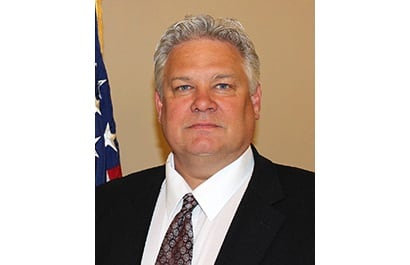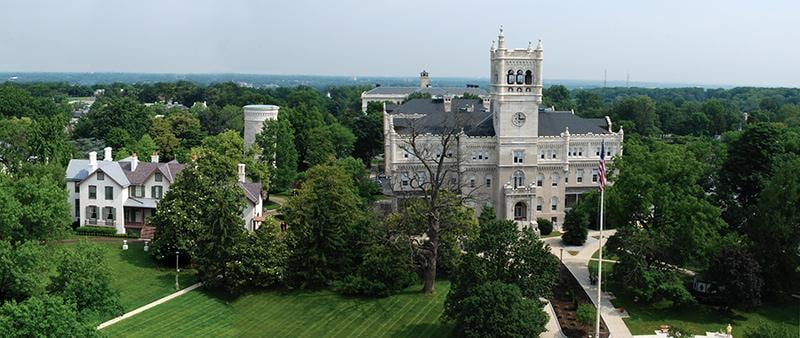Defense officials on Thursday fired the chief operating officer of the Armed Forces Retirement Home, citing his unwillingness to follow their directions to shore up the finances of the agency’s two homes, which care for about 1,000 former enlisted members.
Timothy Kangas was not willing to move forward with Defense Department plans to focus on new sources of income for the home’s campuses in Washington, D.C., and Gulfport, Mississippi, said David Tillotson III, DoD’s assistant deputy chief management officer, during a press call Thursday.
Officials are in the process of hiring another leader, he said ― one with experience in running military retirement communities in a nonprofit setting, which means they generate income to supplement operations.

However, Tillotson said, “the current chief operating officer has not indicated that he‘s on board with going in this new direction. In fact, he’s been a little bit reticient to make some of those changes, and as a result, we’re going to go ahead and make a leadership change.”
Defense officials “appreciate his service,” Tillotson said. “Dr. Kangas as the current chief operating officer has done some very good things in his 18 months of tenure, but I do think we‘ve come to a point where if we’re going to drive forward with the new operating model we probably need to pursue new leadership.”
Kangas served for nine years as a combat medic in the Michigan Army National Guard, with the 107th Engineering Battalion, according to his AFRH biography. He also served with a State Department provincial reconstruction team in Iraq. He holds a doctorate in Public Administration and Public Affairs from Western Michigan University, per his bio. He took over the top post at AFRH in April 2016.
Tillotson will hold a town hall meeting with residents at the Washington campus Friday morning, with the Gulfport residents participating through video teleconference.
“My biggest concern overall is to make sure that we continue to provide service to the current resident population,” Tillotson said. “These are veterans that served their country honorably for many years. I want to make sure that we’re in a position to continue to provide them support as we move forward. I do think looking at new operating models doesn’t undercut that intent.”
RELATED

The new sources of income are yet to be determined, Tillotson said. One option that has been considered is revising the fee structure for residents, which is based on a percentage of resident income and type of care received.
Whether or not any of the new sources of revenue will come out of the residents’ pockets has yet to be determined.
“We’re looking at all sources of revenue. That’s an issue we’ll take up with the new chief operating officer. We’re not going to lose track of the fact that we have a significant number of residents that are not going to be able to, under any condition, pay full price for their residence,” Tillotson said.
“Part of the mission of the Armed Forces Retirement Home is to provide support for those residents. We are not losing track of that mission.”
One revenue source that is being evaluated is the golf course on the Washington, D.C., property. Changes could include how many people use the nine-hole course, and who is eligible to use it.
“The current administration looked at the golf course as a cost issue, and opted to scale back,” Tillotson said. “We did research, and it’s an asset. Can we change the nature of how we conduct the business of the golf course and generate revenue that supports the retirement home?
A number of retirement communities across the country use this model, looking at assets such as facilities that could be rented as meeting rooms that could be used to increase income, he said.
Another example is doing everything possible to make sure Armed Forces Retirement Home gets reimbursed for medical care for residents from insurance plans and other sources, Tillotson said. In a memo earlier this year, then-Deputy Defense Secretary Robert Work directed the DCMO to explore agreements with DoD and the Veterans Affairs Department for reimbursement for medical care to veterans normally provided for veterans by those departments.
Defense officials have been examining every aspect of the homes’ operations, in the wake of a serious cash flow problem that resulted in nearly depleting the AFRH trust fund. The retirement home’s trust fund balance has declined from $186 million in 2010 to $46 million in 2015, according to AFRH budget justification documents for fiscal year 2017. In fiscal 2015, the AFRH had $63 million in expenses against $48 in revenue.
The AFRH has been operating at a deficit of about $20 million a year, Tillotson said, with taxpayers making up the difference.
Officials have been looking at every aspect of the home, including operations, and have determined that the problem is not with operating costs. Those costs “are not grossly out of line,” Tillotson said. “While we can do things to be more efficient, that’s not going to solve the problem. The path forward is a business model focusing on new sources of income.”
Most service members’ connection with these homes begins and ends with a 50-cent-a-month mandatory deduction from their paycheck.
In February, Work directed that the oversight of the Armed Forces Retirement Home be moved from the personnel and readiness division of DoD to the deputy chief management officer.
Attempts to reach Kangas for comment were not immediately successful.





